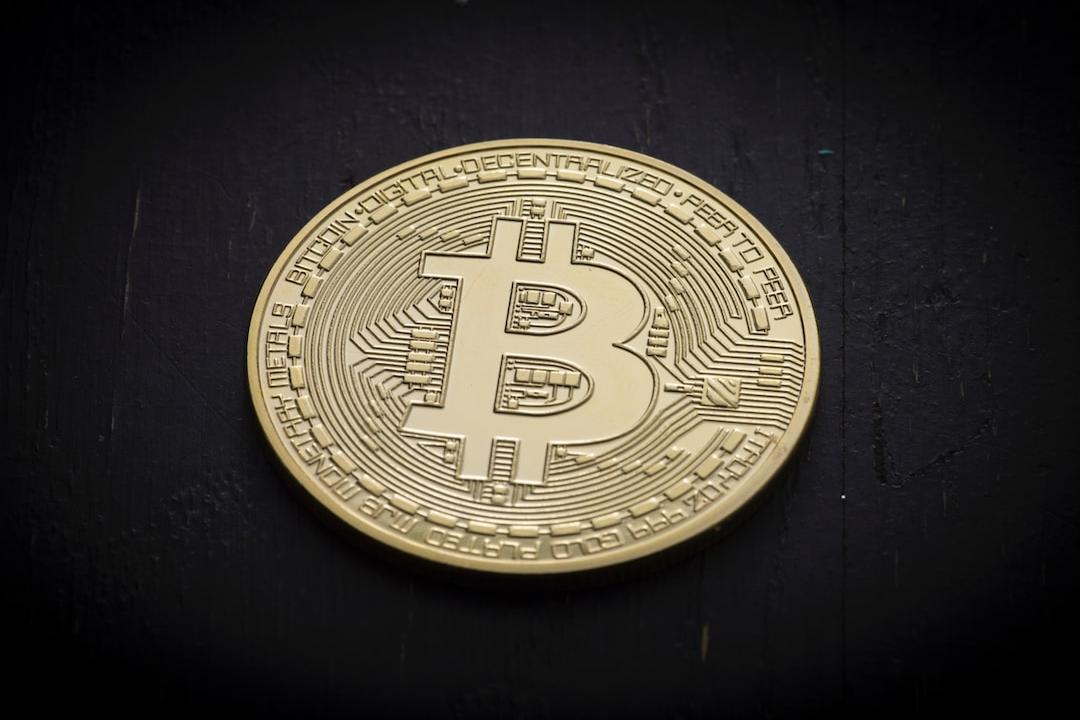Blockchain China reports:

Starting with a question:
If Zhang San steals virtual currency from Li Si and Li Si reports it, what crime should Zhang San be charged with and how many years should he be sentenced?
Taking possession of others’ virtual currency through illegal means often involves two types of charges: illegal acquisition of computer information system data and theft. The specific charge varies in practice; some are convicted of illegal acquisition of computer information system data, others of theft, and some courts find the offender guilty of both crimes, imposing the heavier sentence.
However, regardless of the charge, the amount involved is an unavoidable issue.
Whether it’s mainstream cryptocurrencies like Bitcoin and Ethereum or altcoins (such as platform coins and meme coins), their significant price fluctuations are a common feature. The dramatic rise and fall of prices often stir the hearts of countless investors (perhaps this is where the excitement and joy of speculation lie).
But in criminal cases, how should the amount involved be determined if there are significant price fluctuations over a short period? Different standards for determining the amount can directly influence the outcome of the case.
By: Lawyer Shao Shiwei
0
1
Different methods of determining cryptocurrency prices directly affect the outcome of cases
Let’s look at a case (fictionalized to protect privacy and illustrate legal issues; the cryptocurrencies and prices mentioned do not correspond to actual cases):
Zhang San and Li Si met in a chat group focused on Dogecoin. Zhang San, a veteran in cryptocurrency trading, has been in the industry for years, while Li Si is a newbie who frequently asks basic questions in the group. Zhang San is helpful and often patiently answers Li Si’s questions. Over time, they became acquainted and added each other as friends.
One day, Li Si asked Zhang San how to execute a trade. Zhang San requested a screenshot, and Li Si casually sent a screenshot of his ImToken wallet page. The next day, Li Si discovered that his PEPE tokens had mysteriously disappeared from his wallet? He immediately filed a police report. Soon after, Zhang San was arrested and charged with illegal acquisition of computer information system data, sentenced to eight months in prison.

It turns out that when Li Si sent the screenshot to Zhang San, he inadvertently included his private key. Zhang San used this private key to import the wallet and transfer the PEPE tokens from Li Si’s address to his own wallet.
According to Article 285, Paragraph 2 of the Criminal Law, if the illegal gains exceed 5,000 yuan or cause economic losses of more than 10,000 yuan, the offender can be sentenced to up to three years in prison or detention. The court determined that the PEPE tokens Zhang San transferred were worth 12,000 yuan, which roughly justifies the eight-month sentence.
But is this case without controversy? Certainly not.
Firstly, Zhang San did not actually gain anything illegally because he traded the transferred PEPE tokens on an exchange and lost everything. There are records of these transactions, and there is no dispute about this.
Secondly, the court’s valuation of 12,000 yuan for the PEPE tokens was based on the real-time price at a certain exchange on the day of the transfer. Was this choice of time point scientifically justified?
The value of the tokens involved should be determined based on Li Si’s purchase price, the real-time market price at the time Zhang San transferred the tokens, the price at which Zhang San converted the tokens to USDT, or the judicial audit price (although no audit was conducted in this case, the determination of the amount involved was based solely on the police’s record of Zhang San’s involvement).
Coincidentally, the real-time price of PEPE tokens determined by the court at midnight on the day of the transfer happened to be the highest point of that day and month. According to the aforementioned alternative time points, the price of PEPE tokens had not yet exceeded 10,000 yuan, which is the starting point for conviction and sentencing in this case.
0
2
What are the ways to determine cryptocurrency prices?
Although virtual currencies do not have the same status as fiat currencies and transactions involving them are legally ineffective, their property attributes are recognized in China. Thus, citizens’ holdings of virtual currencies are protected under the law.
However, evaluating the value of virtual currencies remains a contentious issue in practice because any pricing service for virtual currencies violates China’s regulatory policies.
Current judicial practices commonly use the following methods to determine cryptocurrency prices:
1. Reports from pricing agencies and judicial appraisal institutions;
2. The consideration paid for acquiring virtual currencies;
3. The consideration received when converting virtual currencies into fiat currency;
4. Prices from mainstream cryptocurrency exchanges;
5. Judicial discretion without calculating value.
The second and third methods specify the time points for price calculation as “at the time of purchase” and “at the time of conversion,” respectively, but they are still not precise enough. The first and fourth methods are simply different ways of determining the cryptocurrency price, but the specific time point must still be considered.
0
3
In judicial practice, how are time points for cryptocurrency price calculations chosen?
1. According to the illegal gains
If the offender sells the victim’s tokens and exchanges them for fiat currency, this is the simplest scenario where the illegal gains can be used as the basis for conviction. For example, in case (2023) Shanghai 0104 Criminal First Instance 856, Yang Mou illegally obtained virtual currency website permissions through Yapi remote code execution vulnerabilities, controlled internal network servers through lateral movement, implanted Trojans, and found the victim, Mr. Su’s, virtual wallet address, private key, etc., and built false instructions to transfer the victim’s virtual wallet address. The tokens were then exchanged for other virtual currencies and sold, totaling illegal gains of over 2.5 million yuan. The court sentenced Yang for theft and sentenced him to ten years and six months in prison.
But if the victim’s cost of obtaining virtual currency is significantly higher than the price at which the offender stole and sold them due to large price fluctuations, using the illegal gains as the basis for classifying the case may not adequately protect the victim’s interests.
2. According to the middle price on the day of the illegal act
Due to the significant fluctuations in cryptocurrency prices, depending on the type of cryptocurrency, prices may fluctuate by tens or even hundreds of US dollars on the same day. From a defense perspective, of course, it’s reasonable to select the specific time point of the criminal act or the average price of the day.
For example, in the case (2020) Guangzhou 0304 Criminal First Instance 2, Li Mou used the private key and payment password of the Haode Planet project obtained earlier to log into the IMToken virtual trading platform account opened by Haode Company at his residence to steal three Ethereum coins. The HuobiGlobal market transaction screenshots submitted by the victim unit confirmed that on June 20, 2019, the highest Ethereum coin trading price was 270.68 US dollars, the lowest was 265.85 US dollars, and the average price was 268.265 US dollars.
3. Unable to price, consider it at the discretion
In the case (2020) Guangzhou 0304 Criminal First Instance 2, Li Mou, as an employee of the company, not only stole the company’s Ethereum coins but also stole 4 million Haode coins developed by the company. However, since the Haode coins involved in the case were not publicly listed and traded, the court stated that it could not calculate their value. The judgment vaguely mentioned that this aspect should be considered at the court’s discretion (Note: After the case, the defendant returned all Haode coins to the company. From the judgment result, this lawyer believes that the court may not have considered this circumstance).
4. According to the price determined by the appraisal institution
There is also a method in practice where the price is determined based on the final appraisal date by a third-party appraisal institution. For example, in case (2020) Sichuan 1425 Criminal First Instance 1, a rough amount was determined for the involved virtual currency based on the price determined by the Pan Shi Software (Shanghai) Co., Ltd. Computer Judicial Appraisal Institute on the final appraisal date.
Compared to using the time of the illegal act, the purchase price of the victim, the sale price of the offender, etc., as the basis for conviction and sentencing, Lawyer Shao believes that using the appraisal date for pricing loses objectivity in determining cryptocurrency prices and is therefore unreasonable.
0
4
In conclusion
In criminal cases, there is no unified standard for calculating the amount of cryptocurrency involved. In fact, even the prosecutor’s office and the court may disagree.
For example, in case (2020) Shanghai 0106 Criminal First Instance 551, regarding the amount of Tether coins stolen by Luo, the prosecutor’s office prosecuted Luo for converting the crime at the platform trading price equivalent to 12 million yuan. But the court stated that China does not recognize the trading price data of any virtual currency trading information platform for determining the value of Tether coins involved in the case, and accepted the defense lawyer’s argument. The final amount of the crime was based on Luo’s actual profit of 900,000 yuan.
So from the perspective of a criminal lawyer, the controversy over the valuation of cryptocurrency in specific cases is precisely where the defense lawyer can argue.
As mentioned in the case at the beginning of this article,
a different perspective could mean the defendant is innocent.

